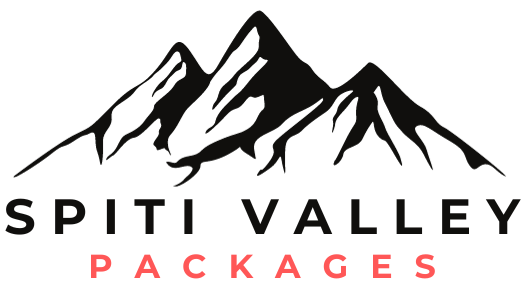Yes, you can enter Spiti Valley in August 2025! Glistening greenery, rich culture, and relative calm—especially when approaching through Shimla—make it one of the best times to visit.
In this comprehensive travel guide, we cover live weather and traffic updates, top places of interest, day-wise itineraries, and critical safety pointers for your trip.
Whether you’re an industry expert or new to traveling, a Spiti Valley trip throughout August allows you to bask in nature without overwhelming crowds and experience the beauty of the region after monsoons. Let’s get started.
Spiti Valley Weather in August 2025
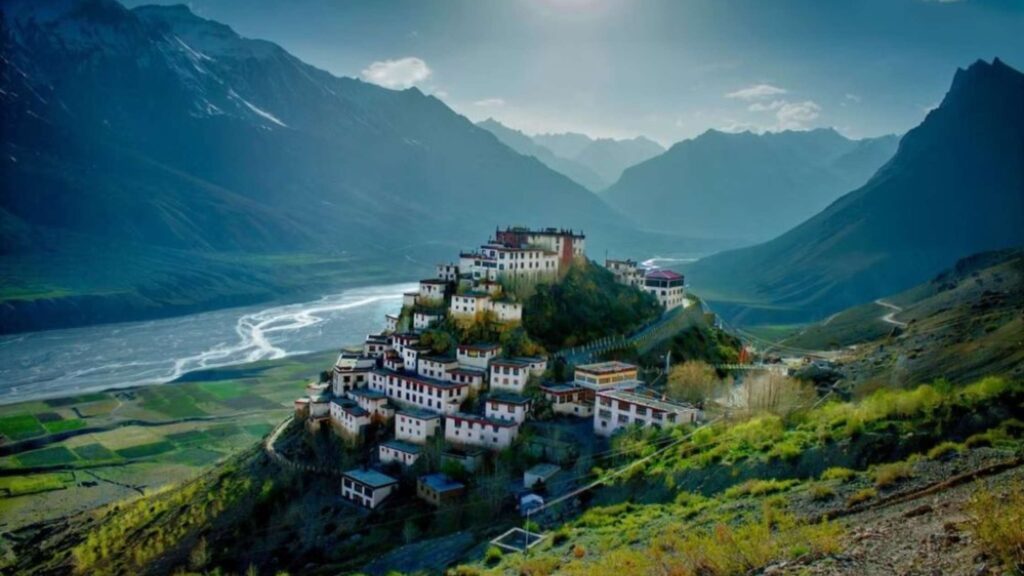
Other parts of Himachal experience heavy rainfall in August, so Spiti enjoys comparably stable weather. This is due to the region’s position relative to the Great Himalayan Range, which acts as a barrier for rain.
Typical Weather Overview:
Day Temperature: 15°C to 25°C – Great for travel/exploring
Night Temperature: 5°C to 10°C – Cold but manageable with layers
Rain: Low to moderate each day (before Spiti, mainly in Kinnaur)
Daylight: Approximately 13 hours of daylight
Rain-Shadow Advantage
While Kinnaur and Manali receive monsoon rains, Spiti stays relatively dry. Nonetheless, landslides can interrupt travel along the Kinnaur route, particularly between Rampur and Nako.
Packing Checklist
- Waterproof windcheater
- Warm layers for night
- Hiking shoes
- Sunscreen & lip balm
- First-aid kit with Diamox for altitude
Road Condition & Access Routes
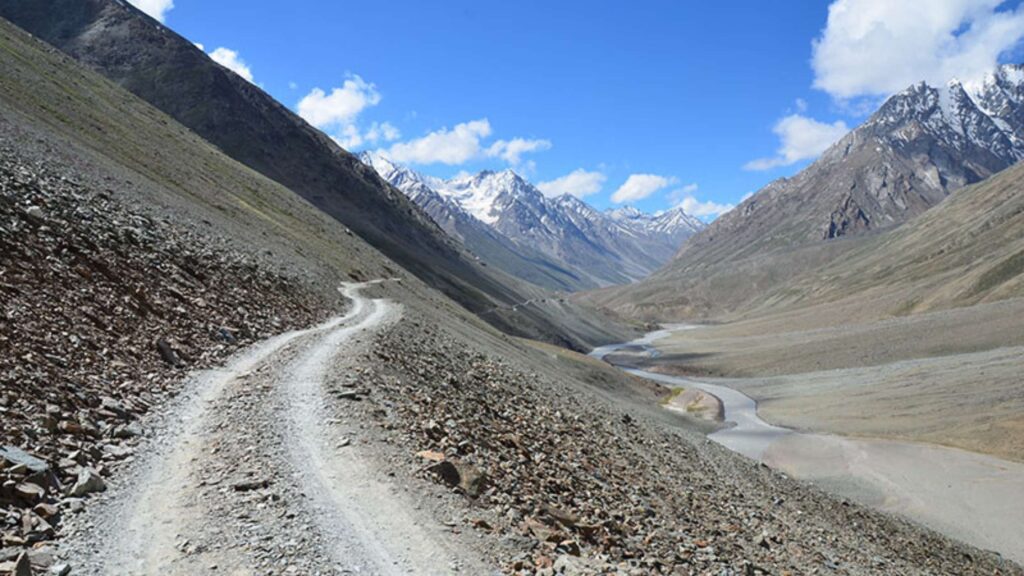
Shimla–Kaza Route (Preferred)
- Open in August
- Some minor landslide prone areas close to Malling.
- Reckong Peo has regular HRTC buses and shared cabs.
Manali-Kaza Route
- Kunzum Pass is likely to be open from mid to late August.
- The road is rough and has water crossings,
- Check HP Road Dashboard for live updates
Driving Tips
- Water crossings are dangerous after noon, so start early.
- Next station after kaza or reckong peo has no fuel stations, so carry spare fuel.
- Mobile signals: Limited after Reckong Peo.
Top 10 Must Visit Places in Spiti (August)
Spiti offers a great mix of spirituality, rugged terrain, and remote culture, so each stop is memorable. Here are ten to get you started:
Key Monastery
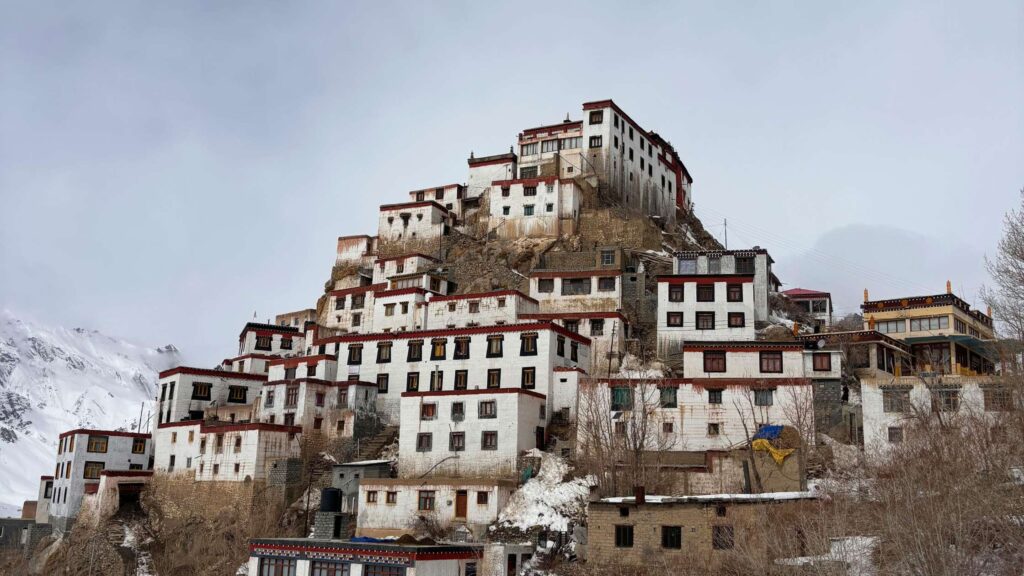
The most recognized monastery in Spiti, located on a hill above the Spiti River. A sunrise visit is a must, you can visit some of the oldest murals, and the monks offered me an overnight stay in the monks’ quarters.
Langza–Hikkim–Komic Circuit
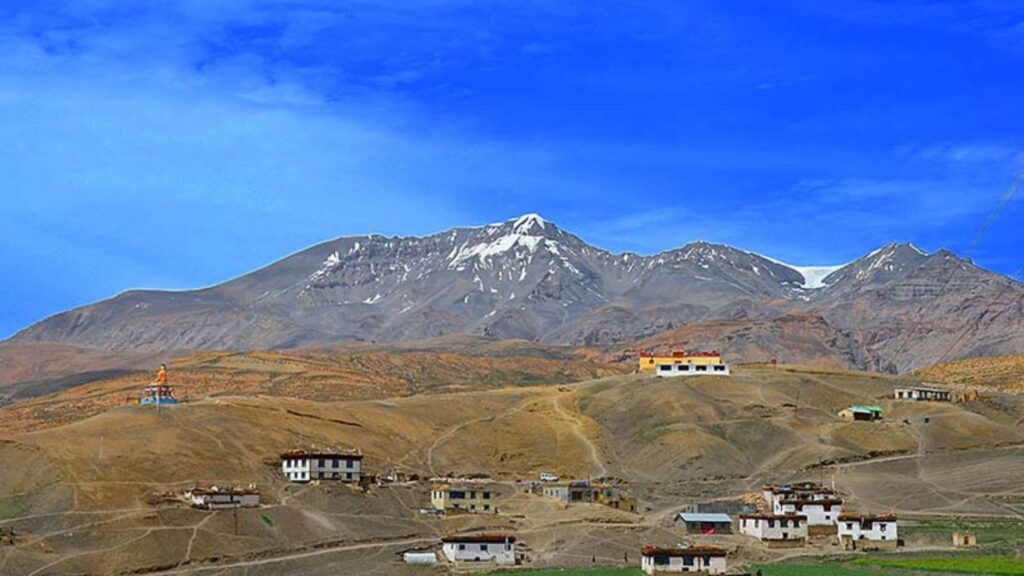
The highest inhabited villages in Asia! They have the highest post office in the world in Hikkim, send yourself a postcard. In Langza, there’s even marine fossils. Komic has a 500-year old monastery too and some of the most beautiful views.
Dhankar Monastery & Lake
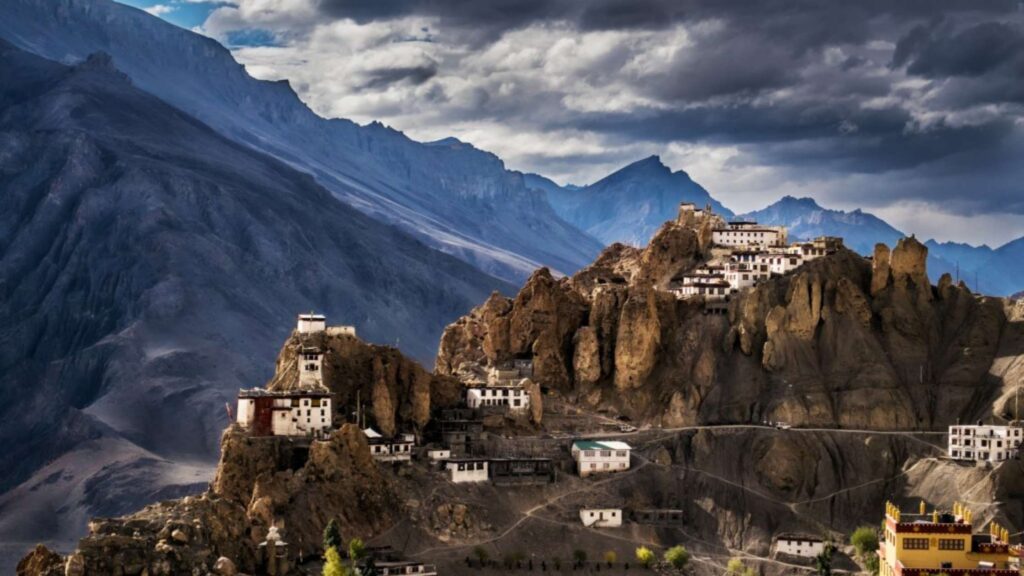
A monastery built precariously on the edge of a cliff. Hike to Dhankar Lake (45–60 mins). A quieter alpine experience, with views of Spiti & Pin confluence.
Chandratal Lake
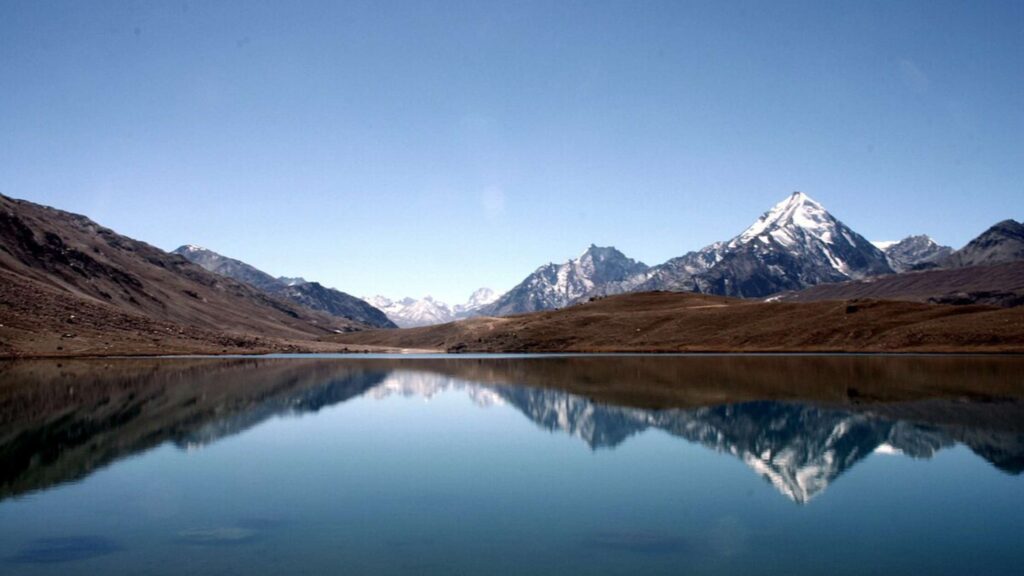
Open in mid-August, this crescent-shaped high-altitude alpine lake is just near Kunzum Pass, known globally for its ever-changing colours, stunning lake reflections, and magical night skies. Camping overnight is something special.
Pin Valley National Park
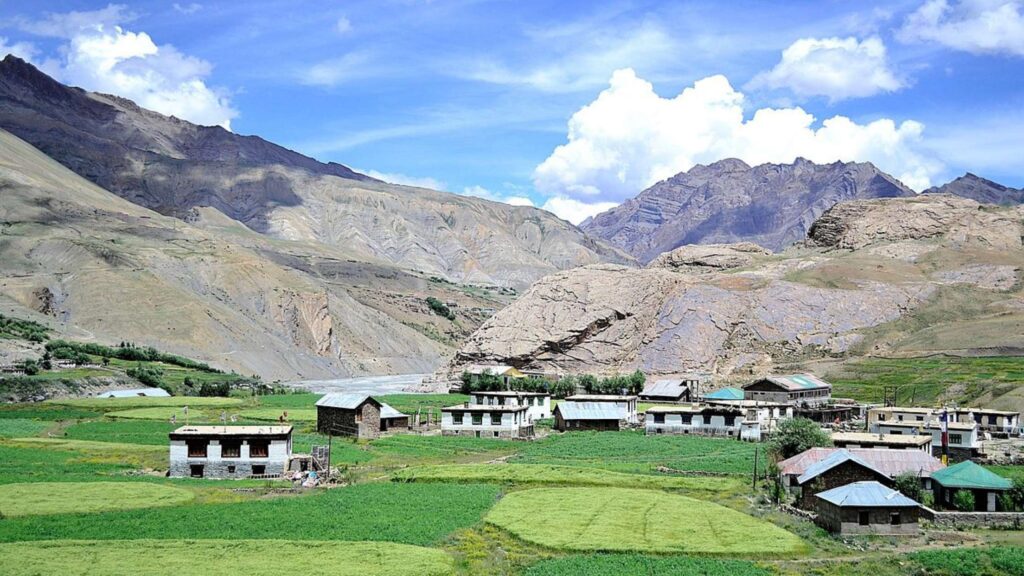
A stark contrast to the desolation of Spiti, Pin Valley bursts to life in August, with wildflowers, yaks and vibrant village life in Mudh. It is also a snow leopard reserve.
Tabo Monastery
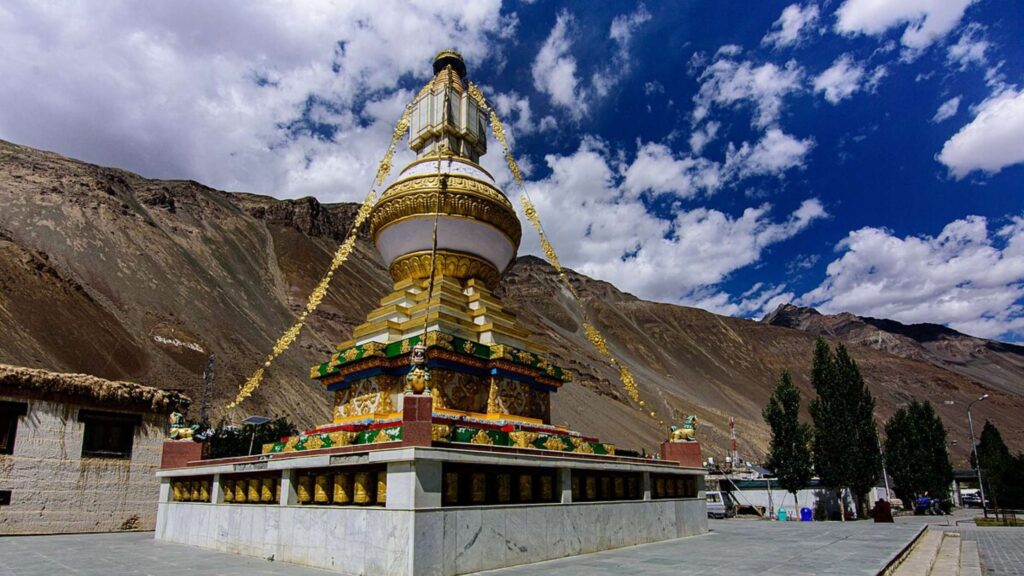
Dubbed the ‘Ajanta of the Himalayas’, this UNESCO-listed location is over 1,000 years old, with a mud-walled complex housing rare frescoes, manuscripts and ancient Buddhist art.
Kibber Wildlife Sanctuary
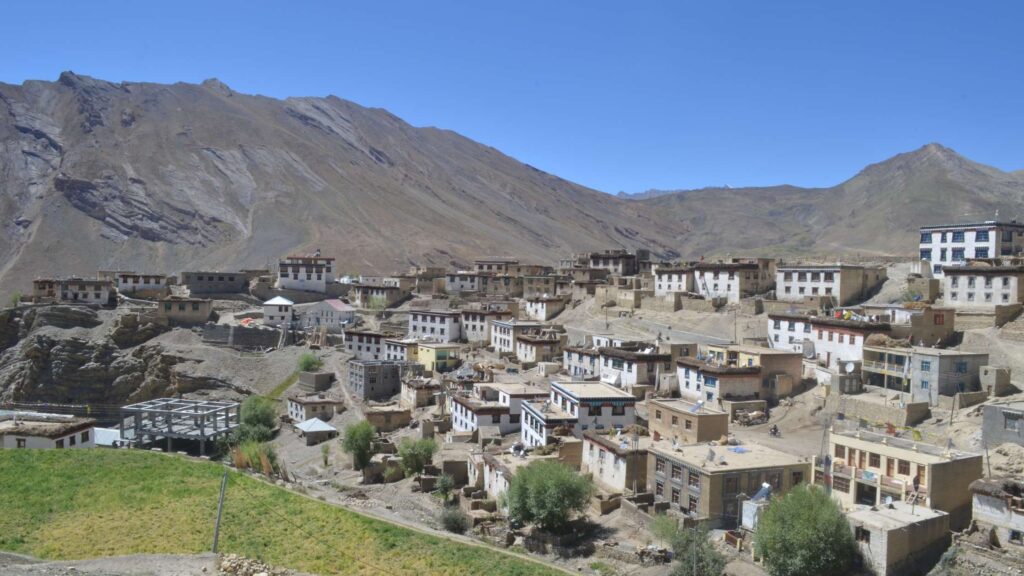
The world’s highest wildlife reserve at 4,200m, Kibber is home to blue sheep, Himalayan foxes and, if you’re lucky, the elusive snow leopard. Kibber village also offers homestays with views.
Ladarcha Fair (15-17 August)
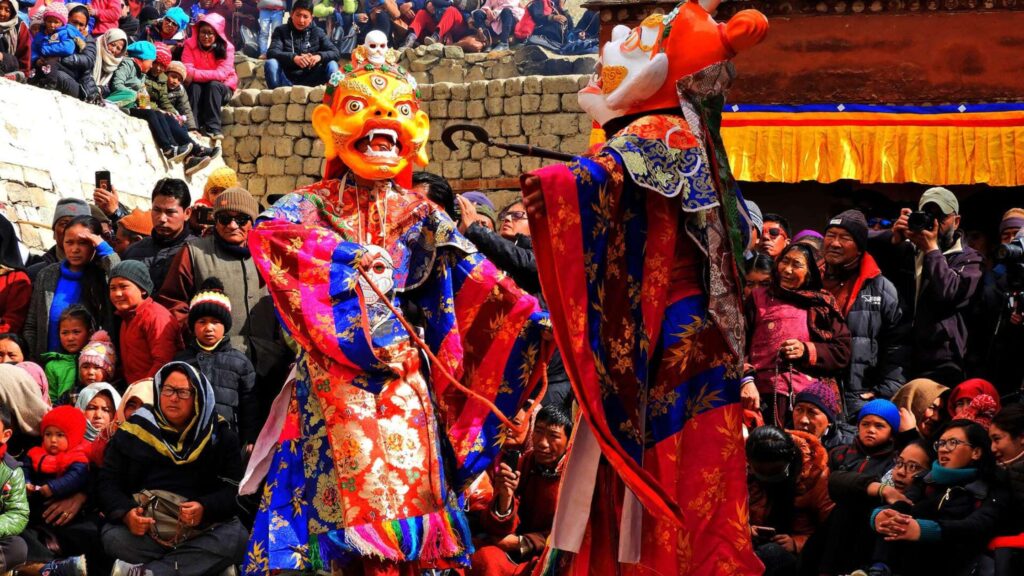
Taking place in Kaza, this lively festival has traders and travellers from Ladakh, Tibet, and Spiti, with folk performances, local foods, handicrafts and traditional games.
Suraj Tal & Baralacha La
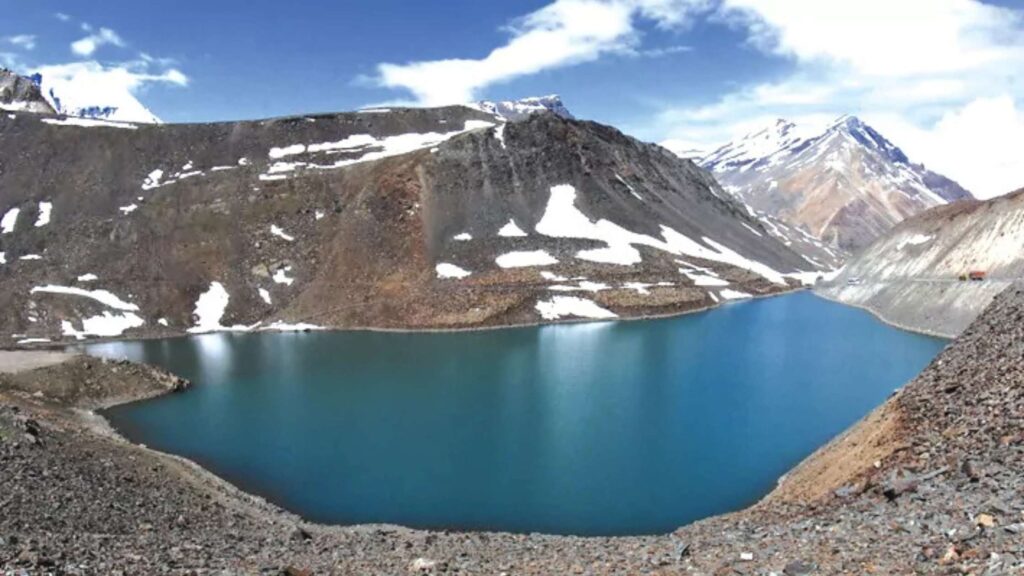
If you are exiting via Manali, take a quick look at Suraj Tal — India’s third highest lake below Baralacha La, surrounded by dizzying glaciers and peaks. A great spot for photos!
Gue Mummy Village
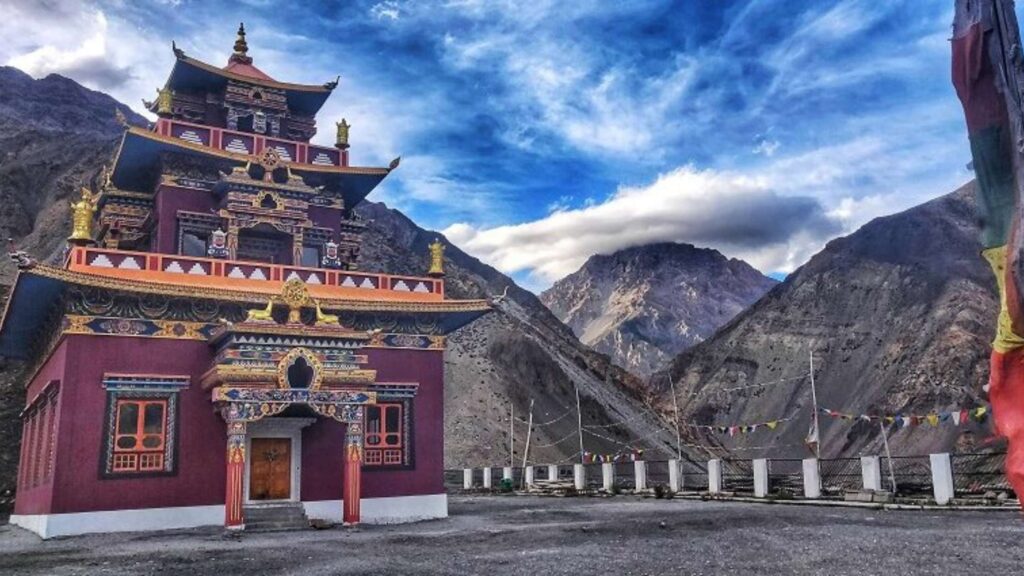
Home to a 500 year old naturally preserved Lama mummy, located behind a slab of glass in a quiet village. A mysterious and spiritual place that few tourists visit.
📌 See our full guide on Key Monastery
Suggested 7-Day Itinerary: Shimla IN, Manali OUT
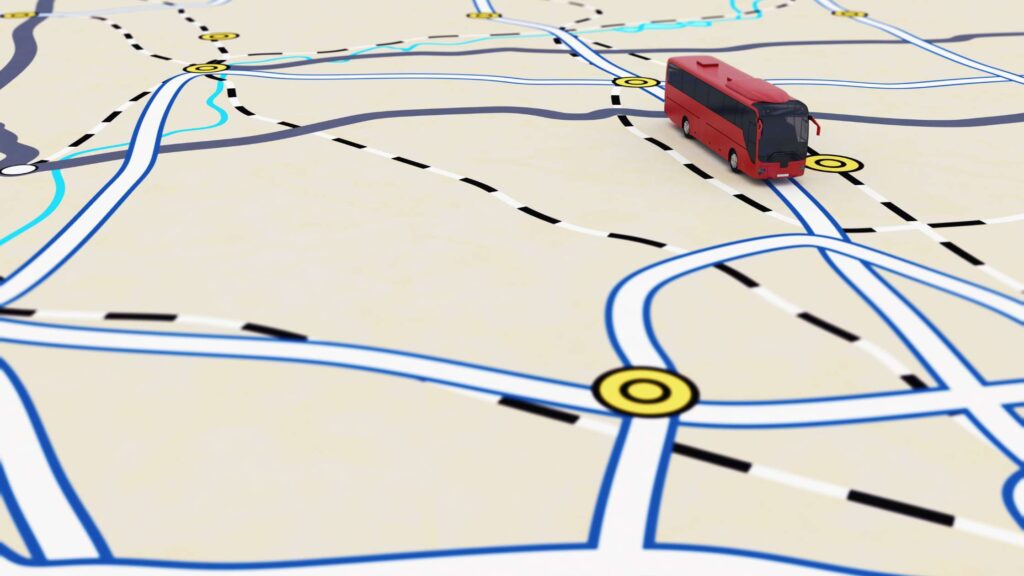
Are you entering via Shimla and exiting via Manali? Then this 7-day itinerary is just right for you in August 2025:
Day 1: Shimla → Sarahan → Reckong Peo
Drive through rich pine forests and beautiful mountain roads
Stop at Hatu Peak (Shimla) and Bhimakali Temple in Sarahan
Rest at Reckong Peo or Kalpa with views of Kinnaur Kailash
Day 2: Reckong Peo → Nako → Gue → Tabo
Drive along magical Sutlej and Spiti rivers
Stop in Nako Lake and visit ancient Gue village to see the 500-year-old mummy
Enjoy Tabo–home to 1,000-year-old Tabo Monastery
Day 3: Tabo → Dhankar → Pin Valley → Kaza
Experience the cliff-hanging Dhankar Monastery and hike (optional) to Dhankar Lake
Divert in the Pin Valley National Park and visit the remote village Mudh
Later that evening arrive at Kaza
Day 4: Kaza Local Sightseeing (Langza–Hikkim–Komic)
Explore the fossils village of Langza and send a postcard from tired Hikkim post office
Visit Komic monastery–highest motorable village in the world
Come back at Kaza for the night
Day 5: Kaza → Key Monastery → Kibber → Chandratal
Visit Key Monastery sunrise to enjoy peaceful vibe and scenic view
Rejoice Kibber village
Day 6: Chandratal → Manali
Drive through the high altitude (elevation) Kunzum La and Rohtang Pass.
Arrive at Manali in the late afternoon or evening.
Relax and take in the scenery of the Lower Himalayas.
Day 7: Rest day or Narkanda
Optional sightseeing: Hadimba Temple or Vashisht hot springs or shopping on Mall Road.
This can also be a rest day or buffer day if the roads were bad.
Tip: Always keep a buffer or extra day while travelling through the Himalayas. This is especially true during monsoons.
Cost Breakdown (Per Person)

Budget Plan (approx. ₹16,000-₹20,000):
Transport (shared cabs/buses): ₹6,000
Budget stay (hostels/homestays): ₹6,000
Food (~₹300/day): ₹2,100
Permits/Entry: ₹500
Miscellaneous/local travel: ₹2,000
Mid-Range Plan(approx. ₹30,000-₹35,000):
Transport (private cab/shared tempo): ₹9,000
Mid-range hotels/camps: ₹12,000
Food (cafes & dhabas): ₹3,500
Entry fees and permits: ₹1,000
Local experiences/shopping: ₹3,000
Get your quote to plan my August Spiti trip: Plan My August Spiti Trip
Packing, Health & Safety Tips
- Waterproof layers: Sudden rains near Kinnaur are common so pack waterproof layers
- Network: Not reliable with Airtel and Jio but Kaza and Tabo have BSNL
- Altitude medication: Consult a physician or carry Diamox.
- Cash: Ensure to carry ₹10-15K, best to withdraw cash in Kaza.
Traveler Voices & Reddit Insights
“Spiti’s roads in August are safer than Ladakh. Shimla route is longer but more stable in monsoon.” – Reddit User u/spiti travel junkie
“Did the circuit in August 2024. Except for the slush near Nako, everything was green, alive and surreal.” – Tripoto Reviewer
Reddit and other forums continue to claim that August is the best time for sightseeing and cultural experiences, but it’s best to be prepared for muddy paths.
FAQs About Visiting Spiti in August
Does Spiti Valley remain open in August?
Yes, both the Shimla–Kaza route and Manali route depend on the status of Kunzum pass.
What is the safer route—Shimla or Manali?
In the monsoon season, the Shimla route is safer because it has a gentler grade, better road conditions, and no landslide risks.
Will I see snow in August?
Only at Kunzum and Baralacha high passes if they are open.
Is Chandratal open in August?
Yes. It can be accessed through the Manali-Batal route in Mid August.
Do I need permits?
No, Indians don’t require any kind of permit. Foreign citizens need to obtain an Inner Line Permit.
Where can I load cash or get a network?
Kaza has the only ATM. BSNL has patchy coverage; others mostly don’t work.
Final Thoughts: Why Visit Spiti in August?
For travelers looking for unique experiences of the Himalayas, the region is far less crowded, routes are open (via Shimla), and many festivals are held.
The Ladarcha Fair fully opens during this period which makes August in Spiti tranquil, serene, and culturally vibrant.
Planning is easier than ever with tailor made quotes for Spiti in August:
Also read: Is Spiti Valley Safe For Solo Travelers And Couples?
